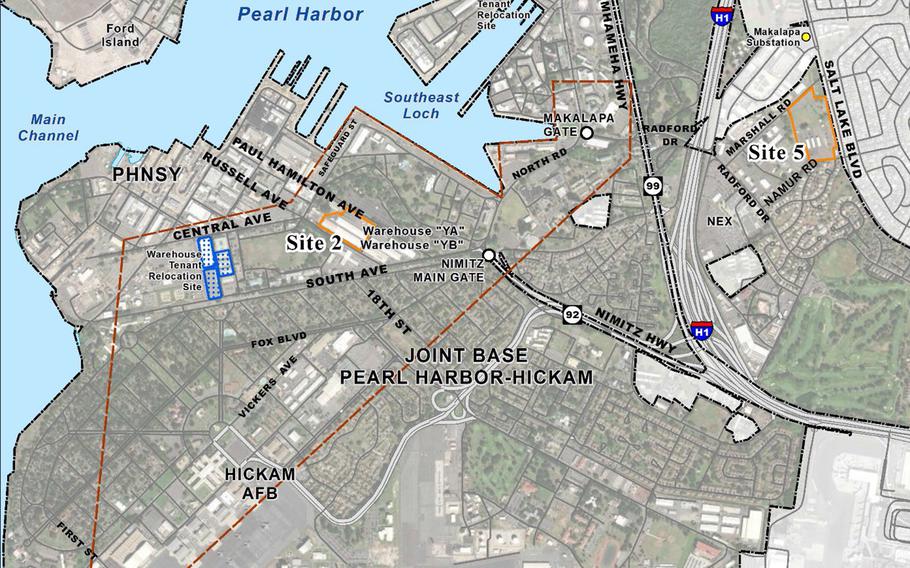
The Navy plans to lease out two sites on Joint Base Pearl Harbor-Hickam, Hawaii, outlined in orange, for construction of biofuel and solar energy plants intended to give the service greater energy resiliency. (U.S. Navy)
FORT SHAFTER, Hawaii — The Navy has determined that leasing out land for construction and operation of a pair of biofuel and solar energy plants at Joint Base Pearl Harbor-Hickam would pose no significant environmental impact.
The Navy’s issuance on Friday of a final environmental assessment that found no significant impact clears the way for a project that will “improve energy security, strategic flexibility, and energy resiliency at JBPHH and the island of Oahu,” the service said in a news release that day.
The finding means the Navy will not be required to prepare a much more comprehensive environmental impact statement for the project, according to the release.
The plants are expected to be operational by 2027.
One 10-acre site would house a biofuel-powered generation plant. A separate 15 acres would hold a photovoltaic solar generating system. Both sites would house lithium-ion battery storage systems.
The locations would be connected to the existing distribution system operated by Hawaiian Electric Co., which provides roughly 95% of the state’s electricity.
Ameresco Inc., a publicly traded renewable energy firm headquartered in Massachusetts, was selected in December 2023 to develop the project.
The land lease could last up to 37 years, at which time the Navy and the plants’ operator could agree on a new lease of up to 13 years, according to the news release.
Under normal operating conditions, the electricity produced by the two plants would supply power to Hawaiian Electric for customers across Oahu, the assessment states.
“During power outages, output would be provided to [the joint base] to meet mission requirements and would additionally support the grid up to its full capacity,” the assessment states. “This would eliminate the use of emergency generators, thereby improving efficiency and reducing equipment emissions.”
The naval base was designated a National Historic Landmark district in 1964, and the projects will affect structures that “contribute” to that district, according to the final assessment.
The plans call for demolishing three historic buildings and altering the use of six others.
Among those slated for demolition are two massive warehouses built in 1941. The larger of the two, at 801 feet by 101 feet, could house nearly three football fields end to end.
“The warehouse was determined to be a distinctive building type due to its large size,” the final assessment states.